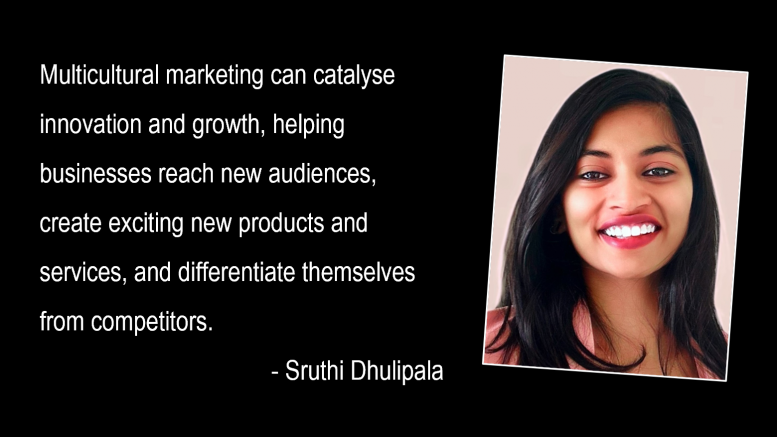It’s 2023, and we’re entering a time when multiculturalism is becoming the norm in PR and marketing strategies. As the world continues to embrace inclusivity, it has become a priority for brands and organisations to prioritise diversity and acceptance by learning about different cultures and speaking to them. This is precisely where multicultural publicity comes in. According to Multicultural Marketing Expert Juanita Velez, this type of marketing focuses on targeting specific ethnic or racial groups, such as Hispanics, African Americans, Asian Americans, and the LGBTQ+ community, as well as non-multicultural segments, to achieve a brand’s marketing objectives.
Multicultural publicity is driving change
According to Forbes, Millennials and Gen-Zers are leading the charge in the multicultural market and show brand loyalty to companies catering to their needs. Today’s audience resonates with inclusive campaigns, and according to a survey conducted by Quantilope, almost 80% of Gen Z respondents stated the significance of brands addressing diversity and inclusion. And Iterable’s research in 2021 shows that at least 75% of today’s consumers are more likely to support a specific brand if they feel their ethnicity is represented. For example, if people of color (POC) see a fellow POC represent a brand in an ad or a campaign, they are more likely to resonate with the brand. And marketers cannot attain their full potential in marketing campaigns if they do not tap into the cultures of potential consumers. Furthermore, multicultural marketing is not just about ticking boxes or meeting quotas; it is about embracing diversity as a strength and recognising its potential to drive innovation and creativity. When businesses embrace different perspectives and approaches, they open themselves to new ideas and opportunities to help them stand out.
Multicultural marketing can catalyse innovation and growth, helping businesses reach new audiences, create exciting new products and services, and differentiate themselves from competitors. According to Lonnell Holman, the multicultural population is a significant driver of population growth in the US. Multicultural PR campaigns allow people to learn about different cultures positively and respectfully. People exposed to different cultures are likelier to appreciate their differences and find common ground. This can lead to greater empathy and understanding and help break down barriers between different communities. One successful multicultural PR campaign is Nike’s “You Can’t Stop Us” campaign which featured 36 pairing athletes from diverse backgrounds. The campaign effectively showcased the interconnectedness of all people without targeting a specific audience. Through the campaign, Nike acknowledged the diversity present within the country and recognised the importance of inclusivity and cultural diversity in their marketing strategy.

(Image Source: Kindel Media on Pexels)
Multicultural PR has its challenges
Despite the importance of multicultural publicity, several challenges must be overcome in order to create successful campaigns. One challenge is overcoming cultural stereotypes and biases. This can be done through careful research, stakeholder collaboration, and a commitment to authenticity and sensitivity. One example of a stereotypical campaign is Dolce and Gabbana’s efforts in 2018, where the brand featured an Asian model clumsily eating Italian food with chopsticks. This campaign not only played on the stereotypes of Chinese culture but also upset the Chinese audience leading to a PR debacle and the company releasing an apology statement.
Bringing diverse communities together can be a challenge, especially when it comes to crafting a successful multicultural PR campaign. It’s no easy feat to reach a wide range of people, including individuals from various cultural backgrounds, ages, and socioeconomic groups.
Another challenge of multicultural publicity is the language barrier. Marketing campaigns often rely on language to communicate messages and ideas effectively. However, language is not always a straightforward issue – It’s essential to ensure that PR and marketing materials are translated accurately and appropriately, considering cultural nuances and regional variations. Failing to do so can lead to miscommunications, misunderstandings, and even offense. This can be particularly challenging when dealing with multiple languages, dialects, and scripts. Marketers and PR pros must work closely with DEI consultants and language experts to ensure that their campaigns are linguistically and culturally sensitive and effectively convey the intended message to all audiences. Overcoming these challenges requires a deep understanding of the cultures being targeted, an open mind, and a willingness to adapt and learn.
Effective multicultural marketing requires more than just good intentions and flashy campaigns. One of the most prominent challenges marketers face is measuring the impact of their efforts. By utilising metrics like engagement, reach, and impact, you can gain valuable insights into how your campaign resonates with your target audience. With careful planning and execution, you can create a lasting impact that boosts your bottom line and promotes understanding and inclusivity for all.
The future of PR is multicultural
Multicultural publicity is essential for promoting understanding and inclusivity in today’s world. By celebrating diversity and finding common ground between different communities, we can create a more respectful society where everyone feels valued and respected. Despite the potential changes looming ahead, it is encouraging to see an increase in marketing that caters to the Hispanic, Black/African American, LGBTQIA+, and AAPI segments.
With rapid advancements in technology, brands now have the opportunity to reach a broader and more diverse audience than ever before. Social media platforms, in particular, provide a powerful tool for engaging with consumers from different backgrounds and cultures. The rise of virtual reality and augmented reality technology also offers the potential to create immersive experiences that celebrate diversity and showcase different cultures meaningfully. As we continue to evolve as a society, multicultural marketing will undoubtedly play an increasingly vital role in bridging the gaps between communities and promoting unity in diversity.
The views and opinions published here belong to the author and do not necessarily reflect the views and opinions of the publisher.



Be the first to comment on "Building a More Understanding and Inclusive Future Through Multicultural Publicity"